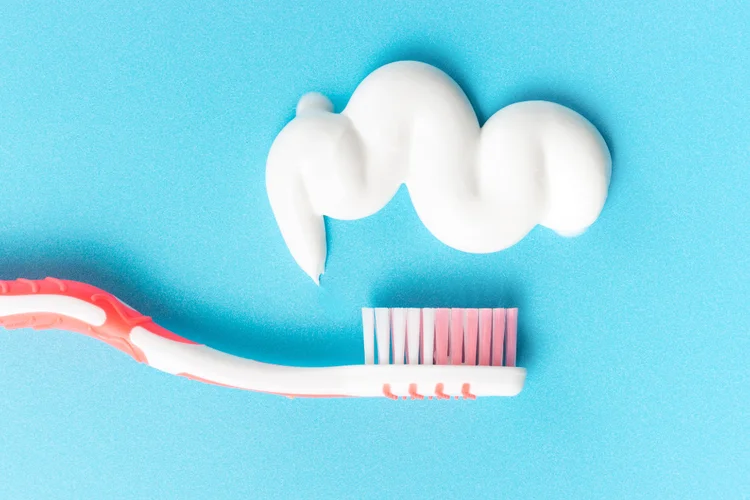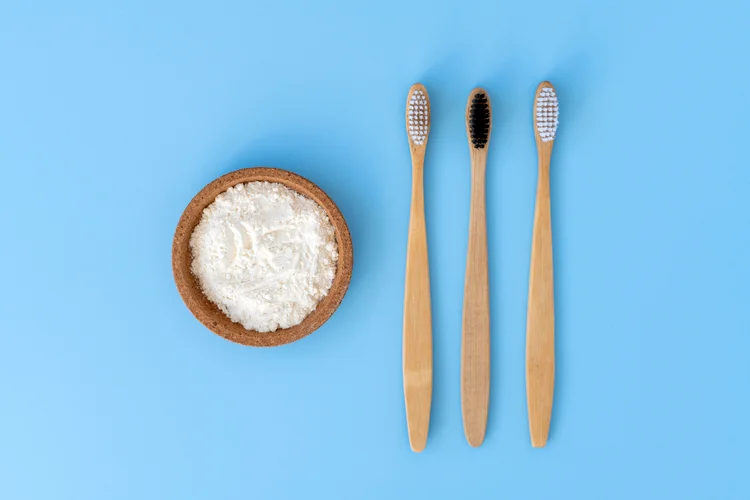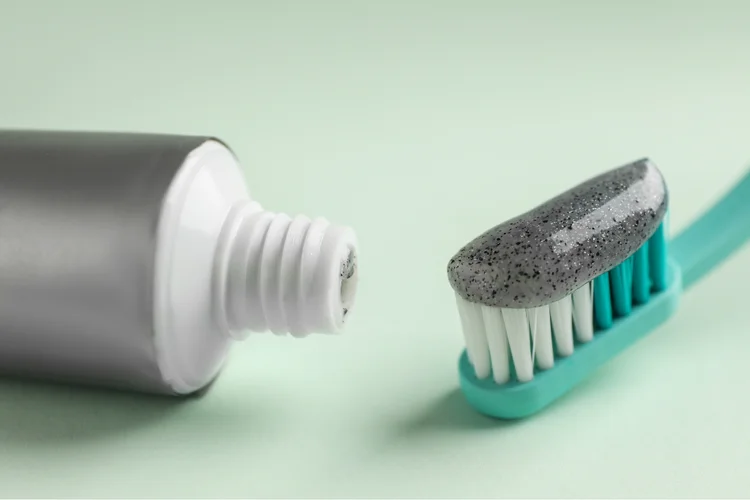Selecting the appropriate toothpaste can enhance the look of your smile, based on personal factors like the type of stains present. With numerous options available that all claim to brighten teeth, it can be challenging to determine which whitening toothpaste is most suitable for you. In this guide, we will explain how teeth whitening toothpastes typically function, which ingredients to look for, and provide tips to maximize the benefits of your oral care routine.

How Does Teeth Whitening Toothpaste Work?
Teeth whitening toothpastes target surface stains using mild abrasives and active ingredients to polish and lift discolouration without altering your enamel’s natural colour. While effective for many, deeper, intrinsic stains beneath the enamel may benefit more from professional whitening treatments. However, if your goal is to maintain brightness or address minor stains, a quality whitening toothpaste can be a valuable part of your oral care routine.
WhatsApp Us Now
What Ingredients in Toothpaste Whitens Teeth?
The effectiveness of a whitening toothpaste often boils down to its ingredients. Here are the most common ones to look out for:
1. Hydrogen Peroxide
Hydrogen peroxide is a widely recognised whitening agent in dental care due to its oxidative properties, which allow it to penetrate the enamel's surface and break down staining compounds. Many whitening toothpastes contain a low concentration of hydrogen peroxide, suitable for gradual stain reduction without excessive irritation. However, using peroxide-based toothpaste as recommended is vital, as overuse may lead to gum sensitivity or irritation in certain individuals.
2. Sodium Bicarbonate (Baking Soda)
Sodium bicarbonate, or baking soda, acts as a mild abrasive and alkaline agent, gently polishing enamel without affecting tooth structure. Its alkaline properties also help neutralise oral acids, maintaining a balanced pH in the mouth and reducing conditions favourable for plaque formation. Baking soda is particularly suitable for those with sensitivity concerns as it offers a gentler abrasive action. However, excessive use may gradually wear down enamel, so it’s best to use it in moderation.

3. Calcium Carbonate
Calcium carbonate is a naturally occurring abrasive ingredient that helps polish the surface of teeth to remove stains while maintaining the strength of the enamel. It is commonly included in products designed to be gentle on enamel and is suitable for those who prefer a moderate whitening effect. This ingredient also helps support the mineral structure of the teeth, contributing to a clean and smooth appearance. However, because of its abrasive properties, frequent use may lead to enamel erosion, so it is important to use it in moderation.
4. Silica
Hydrated silica acts as a fine, controlled abrasive to gently remove surface stains, enhancing tooth smoothness and appearance without excessive wear. It’s often chosen for its low-impact, consistent polishing action, making it ideal for individuals who require a balanced whitening effect with minimal risk of sensitivity. However, like baking soda and calcium carbonate, excessive application may gradually erode enamel, so moderate use is recommended.
5. Activated Charcoal
Activated charcoal is a popular ingredient in whitening toothpastes due to its adsorptive properties, with a porous structure that binds to surface stains for effective removal, providing a distinct deep-clean feel. However, while it can be effective for stain removal, frequent use may risk enamel wear due to its abrasive nature, so moderation is recommended.

6. Enzymes
Enzymes such as papain and bromelain are used in some whitening toothpastes for their ability to degrade protein-based stains on the enamel surface. These natural enzymes specifically target organic discolouration, offering a subtle yet effective whitening solution that aligns well with a natural or gentle oral care regimen. Enzyme-based formulations are favoured by those seeking non-abrasive options for stain removal.
Tips for Using Whitening Toothpaste Effectively
To make the most out of your whitening toothpaste, here are some handy tips:
- Brush Regularly but Gently: Opt for a soft-bristled brush and use circular motions to avoid enamel wear, which can increase susceptibility to discolouration.
- Pair with an Electric Toothbrush: Electric brushes offer consistent pressure and motion, enhancing stain removal.
- Rinse and Floss: Rinse well after brushing to clear any whitening residue. Daily flossing helps remove debris between teeth, preventing stains and plaque buildup.
- Don’t Neglect Professional Cleaning: Even with whitening toothpaste, regular professional cleanings are essential for thorough plaque and tartar removal, keeping your teeth bright and healthy.

Is It Safe to Use Whitening Toothpaste Everyday?
When used as directed, most whitening toothpastes generally present no issues for regular use. However, overuse may gradually wear down enamel due to mild abrasives, potentially leading to sensitivity and making teeth more susceptible to staining. For those with sensitive teeth or gums, opting for a low-abrasive or gentler formula, or alternating with a regular fluoride toothpaste, could be beneficial. Consulting your dentist can offer guidance on safe usage and advice that balances a brighter smile with healthy teeth maintenance.
How Long Does It Take to See Results?
Whitening toothpaste results can vary, depending on the product, formulation, and the degree of existing stains or discolouration. Some people may notice gradual improvements with consistent use, while others may require a longer period to see visible changes. For quicker or more noticeable results, consider professional whitening options such as in-clinic treatment or dentist-prescribed custom whitening trays as these can address deeper stains more effectively.

Summary: Choosing the Right Whitening Toothpaste
Incorporating a whitening toothpaste into your daily routine can be an easy, effective way to maintain a bright smile and boost confidence. With the right ingredients and good oral hygiene, you can keep stains at bay and enjoy a cleaner, whiter appearance. If you’re seeking a more noticeable transformation, dealing with deeper stains, or would like professional guidance on whitening options, feel free to reach out to our team at True Dental Studio to discuss the best approach for your needs!
How Do I Book a Teeth Whitening Appointment?
Book Teeth Whitening Appointment
Book NowEnquire More Through Email
Email Us NowEnquire More Through WhatsApp
WhatsApp Us NowWhy Choose True Dental Studio?
Friendly Dentist and Team
Our team treats each and every patient to the best of our ability. This is the reason why entire families have continued their dental care with True Dental Studio for many years, from all over Singapore.
Minimal Discomfort
At True Dental, it is our commitment to ensure our patients are kept as comfortable as possible. We aim to minimize discomfort, if any, for our patients.
Affordable Treatments
We believe in pricing quality treatments at a competitive rate. We are transparent and upfront with our treatment costs.
Our Smile Scorecard
Frequently Asked Questions
The effectiveness of whitening toothpaste largely depends on its ingredients, such as hydrogen peroxide, sodium bicarbonate, or activated charcoal, which target surface stains. However, for deeper, intrinsic stains beneath the enamel, professional whitening treatments are generally more effective than over-the-counter options.
Yes, whitening toothpaste can be effective for reducing surface stains and lightening teeth slightly. However, it’s best for minor staining rather than deep or intrinsic stains.
Toothpaste can help whiten teeth by removing surface stains, but it won’t change the natural colour of your teeth or address deeper stains beneath the enamel.
Whitening toothpaste can help reduce surface stains that contribute to yellowing, but it may not fully remove all yellow tones, especially if the staining is intrinsic.
Yes, yellow teeth can become whiter with consistent care, including whitening toothpaste, home whitening kits, or professional treatments for more noticeable results. However, if the yellowing is due to intrinsic stains beneath the enamel, it may require specialised dental treatments.
Professional teeth whitening treatments, such as in-office procedures, generally provide some of the fastest and most effective results, with noticeable improvements sometimes achieved within a single session.
Some whitening toothpaste contains ingredients like hydrogen peroxide or baking soda, which can help reduce surface stains and make teeth appear whiter. However, these toothpastes are generally less effective than professional treatments, and results may vary based on individual use and dental hygiene.
Generally, whitening toothpaste can be used daily if it’s a low-abrasive formula. However, it’s best to avoid daily use of high-abrasive ingredients like activated charcoal or strong peroxides, which may wear down enamel over time. For sensitive teeth, alternating with a regular fluoride toothpaste can help protect enamel while still providing whitening benefits.
Active ingredients like hydrogen peroxide, carbamide peroxide, and sodium bicarbonate effectively whiten teeth by breaking down stains and polishing the enamel.
Whitening toothpaste mainly removes surface stains. If your teeth remain yellow, you may have intrinsic stains or enamel thinning, which might require professional treatments.
Achieving a dramatic whitening effect in just 3 minutes is challenging, as noticeable results typically require consistent care. However, professional treatments, such as in-clinic whitening, can offer fast, lasting results, sometimes visible after just one session.
For the brightest results, consider professional whitening treatments, such as laser whitening or dentist-prescribed custom whitening trays, which can address deeper stains more effectively than over-the-counter whitening kits.
The most effective whitening toothpastes generally contain ingredients like hydrogen peroxide or mild abrasives, such as sodium bicarbonate, to target surface stains. However, results vary based on the level of staining, and for deeper stains, professional treatments may provide more effective results.
Yes, many whitening toothpastes effectively reduce surface stains using active ingredients like hydrogen peroxide and mild abrasives, such as sodium bicarbonate, to brighten teeth to a certain degree. However, they are less effective on intrinsic stains beneath the enamel.
Whitening toothpaste may not work if stains are intrinsic or due to enamel thinning. In such cases, professional treatments may be more effective.
Ingredients like hydrogen peroxide, carbamide peroxide, sodium bicarbonate, and activated charcoal whiten teeth by breaking down or polishing away surface stains for a brighter appearance.
Whitening toothpastes are generally safe when used as directed. Overuse, however, can lead to enamel erosion or increased sensitivity due to abrasives.
Whitening toothpaste is generally safe, but overuse of abrasive formulas may wear down enamel over time. Alternating with regular toothpaste can help protect enamel, and consulting a dentist can provide guidance on the best usage for your specific needs.
Results from whitening toothpaste can differ widely, depending on the specific product, its formulation, and the extent of existing stains or discolouration. While some may see gradual brightening with regular use, others might need more time for noticeable changes to appear.
The most effective whitening toothpastes often include ingredients like hydrogen peroxide or gentle abrasives, such as sodium bicarbonate, designed to tackle surface stains. However, the results can depend on the depth of staining, with professional treatments offering a more powerful option for addressing deeper discolouration.
The best whitening toothpastes for yellow teeth often include ingredients like hydrogen peroxide or gentle abrasives, such as sodium bicarbonate, which work well on surface stains. However, effectiveness can depend on how deep the yellowing is; for more stubborn discolouration, professional treatments may provide a more comprehensive solution.
Whitening toothpaste is not recommended for braces, as it can cause uneven colouring once braces are removed. It’s best to wait until after braces are taken off.
Toothpastes with ingredients like hydrogen peroxide or gentle abrasives, such as sodium bicarbonate, are often effective for whitening, as they help lift surface stains. However, results can vary based on the depth of discolouration, with professional treatments providing a stronger option for tackling deeper stains.
Natural whitening toothpastes often use ingredients like sodium bicarbonate or enzymes such as papain, which are gentle on enamel and free from synthetic chemicals. However, they may not be as effective for deeper stains, as they primarily target surface discolouration.
Using a whitening toothpaste with mild abrasives and a mouthwash containing hydrogen peroxide can enhance whitening effects, especially on surface stains.
During braces treatment, a non-whitening toothpaste is generally recommended to prevent uneven colouring. After braces are removed, a low-abrasive whitening toothpaste can help gently brighten your smile. For deeper stains, professional treatment may be more effective.
Low-abrasive whitening toothpastes with gentle ingredients like sodium bicarbonate or a low concentration of hydrogen peroxide are ideal for sensitive teeth, as they help lift stains without causing irritation.
